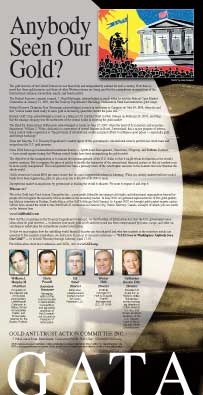The Bear’s Lair
By Martin Hutchinson the Asia Times
Commentators, including the egregious Federal Reserve chairman Ben Bernanke, are increasingly claiming that the United States is in the process of a V-shaped recovery from the Great Recession. Certainly first-quarter gross domestic product (GDP), to be announced next week, is likely to show a substantial bounce, albeit not quite the inventory-driven 5.6% annualized growth of the fourth quarter. Yet commentators should be careful what they wish for: a V-shaped recovery is likely to lead not to a prolonged period of healthy growth, but to an economic explosion and collapse.
This may seem counter-intuitive. You would normally expect a period of above-normal growth after such a deep recession, whatever the political environment. After all, even in 1934, a year in which the federal government was taking a hatchet to the banking system and capital markets through the Glass-Steagall Act and was micro-managing wages, prices and product specifications through the National Recovery Administration, US GDP, it is now estimated, rose by an extremely healthy 10.9%. Indeed, 1933-34 form the principal supporting evidence for the efficacy of Keynesian "stimulus" - real federal expenditure rose by 23.7% in 1933 and no less than 34.2% in 1934, a public sector bloat rate of which even President Barack Obama might be proud.
In the very short run, intuition may be right. Manufacturing numbers for the last couple of months have been good, while surging retail sales and the plunging savings rate suggested that the US consumer has discovered yet another credit card in an old jacket pocket that he had forgotten about. Automobile sales too have rebounded nicely, and Ford in particular is looking more solid than it has for several years. Tech sector profits seem to be "surprising on the upside" as they say, with Google reporting sharply rebounding ad sales. With such growth, even the projected federal deficit may decline by US$50 billion or so, still not quite a rounding error.
The recovery may be V-shaped in the next quarter or two, but it is very doubtful indeed whether it can continue to be so for long enough to define itself as a true recovery rather than merely an intermediate bump in a "double-dip" recession. On unemployment, for example, since 8.4 million jobs have been lost in the recession, a US recovery that lasted two years from now would have to create 350,000 jobs per month to restore the jobs lost, and that would still leave unemployment much higher than in December 2007, at 6.5-7%, because over 5 million more people would have been added to the labor force between December 2007 and April 2012.
With an employed US labor force of 139 million at present, job creation at 350,000 per month implies an increase in the work available of 0.252% per month or 3.02% per annum. Add the 2% trend growth in productivity, and you're talking more than 5% GDP growth for two full years. A lovely V-shaped recovery if you could get it, but in terms of duration and extent, the bare minimum necessary for the recovery to qualify as a true economic expansion and not simply a bump in a prolonged recession.
So what are the chances of 5% US annual GDP growth for the next two years and commensurate growth in international markets? To see the problems involved, consider the question of commodity and energy prices. In the last 12 months, while the global economy has been operating far below capacity, the Organization for Petroleum Exporting Countries benchmark crude oil price has risen from $50.20 to $81.52 per barrel, a 62.4% increase. Yet US GDP, which bottomed out last April/May, has risen no more than 5% in the last 12 months, probably less. Thus two years of 5% GDP growth would imply energy prices rising at least as quickly as in the last 12 months, as Chinese and Indian growth continued rapid and US oil consumption rebounded towards historic trends.
Read the Rest of Article
Wednesday, April 21, 2010
Subscribe to:
Post Comments (Atom)

![[Most Recent Quotes from www.kitco.com]](http://www.kitconet.com/charts/metals/gold/t24_au_en_usoz_2.gif)






No comments:
Post a Comment